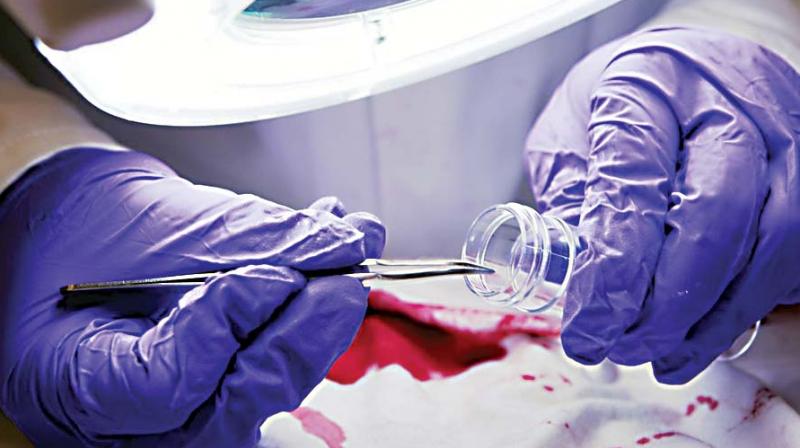Chennai: Forensic expert differs with judicial panel’s finds

Chennai: The Justice S.R. Singaravelu Commission, which probed the death of a Dalit boy E.Elavarasan whose body was found near the railway tracks in Dharmapuri in July 2013 has come to a conclusion that the boy allegedly committed suicide by throwing himself onto the moving train as his wife Dhivya left him, rejecting the claims of his family and several social activists that he was another victim of brutal 'honour killing'.
However, Dr Sampath Kumar, one of the leading forensic experts was sure that the youth did not commit suicide. Dr Sampath Kumar, head of the forensic medicine department of the Sri Ramachandra Medical College and Research Institute in Chennai and Dr Thangaraj of SRM College and Research Centre, leading experts in the country, were called upon to examine Elavarasan's body and the scene of death and give a report to the court, on whether a re-post-mortem should be conducted or not.
The one-man Commission was set up by then Chief Minister J. Jayalalithaa on July 8, 2013 to probe the cause of death of Elavarasan, whose inter-caste marriage with Divya, hailing from the most backward Vanniyar community, which led to caste clashes in Dharmapuri district then. About 400 houses in three Dalit villages were allegedly burnt down by the Vanniyar fringe groups.
Almost five years after the death of E. Elavarasan, the Singaravelu Commission on August 21, 2018, submitted the report to the Chief Minister Edappadi. K. Palaniswami, concluding it was a suicide. The report is yet to be made public but parts of it have been published in an English news magazine.
The panel agrees with the Crime Branch-Criminal Investigation Department (CB-CID) and the Dharmapuri district police, which claimed that it was a case of suicide owing to "severe depression" as his wife Dhivya left him.
The first post-morterm, which was conducted by the Dharmapuri district government doctors, came to a conclusion that he committed suicide, However, his parents and activists who suspected foul play in the death of Elavarasan, filed a petition in the High court demanding second post-mortem. After the examination, Dr Sampath Kumar said there were more points to prove that the boy did not commit suicide, particularly the mysterious appearance of grease marks on the dead youth's chest after two post- mortems had already been conducted, presumably to suggest he had made physical contact with the train. The pattern of injury does not correlate with the story of him being hit by a train.The most significant point is there were only two external injuries, one on the left side of the head and one on left forearm. If he was facing the train, the whole of his front left side including his shoulder should have been injured. "We did not find any injuries on the shoulders. Even if he was lying the whole skull would be fractured," he said. "Even if we don't have enough to prove that Ilavarasan was murdered, we have everything to show that he did not commit suicide. This was not a railway accident," Dr Sampath Kumar said, opening up to the media.

